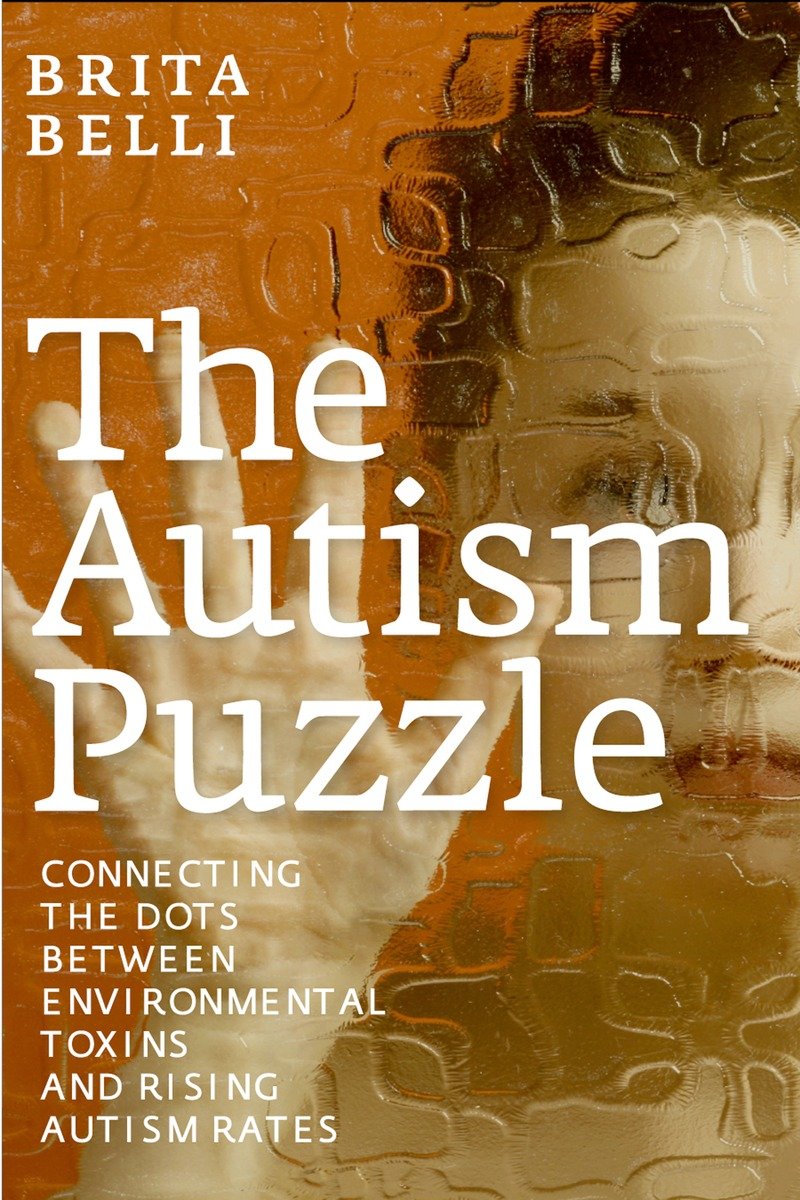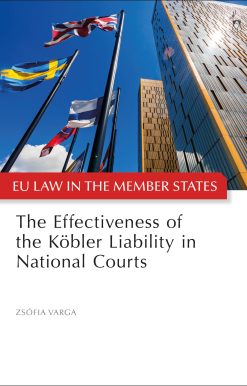No gift registry found click here to create new registry
Cart contain Gift Registry Items cannot add products
The Autism Puzzle: Connecting the Dots Between Environmental Toxins and Rising Autism Rates
11.00 JOD
Please allow 2 – 5 weeks for delivery of this item
Add to Gift RegistryDescription
With 1 in 88 American children now affected by autism, The Autism Puzzle is the first book to move beyond the distractions of the vaccine debate to address compelling new evidence that autism may be the result of the pairing of environmental exposures with genetic susceptibilities that together impact the brain development of children.Journalist Brita Belli brings us into the lives of three families with autistic children, each with different ideas about autism, as she explores the possible causes. She interprets for readers compelling evidence that environmental toxins—including common exposures from chemicals mounting in our everyday lives—may be sparking this disorder in vulnerable children. Belli calls for an end to the use of hazardous materials—like toxic flame retardants used in electronics and furniture—insisting that we cannot afford to experiment with our children. The Autism Puzzle puts a human face on the families caught in between the debates and offers a refreshingly balanced perspective.
Additional information
| Weight | 0.24 kg |
|---|---|
| Dimensions | 1.5 × 13.97 × 20.96 cm |
| PubliCanadanadation City/Country | USA |
| Author(s) | |
| Format Old` | |
| Language | |
| Pages | 208 |
| Publisher | |
| Year Published | 2013-4-30 |
| Imprint | |
| ISBN 10 | 1609804600 |
| About The Author | BRITA BELLI is the editor of E – the Environmental Magazine—the largest independent magazine dedicated to green issues. She is the author of The Complete Idiot's Guide to Renewable Energy for Your Home and editor of EarthTalk: Expert Answers to Everyday Questions About the Environment. Her articles have appeared in Plenty Magazine, MSN.com, Treehugger.com, Fairfield Magazine, Colorado Springs Independent, Black & White City Paper, Illinois Times, and Monterey County Weekly. |
"The Autism Puzzle unlocks many alarming truths about this worldwide epidemic and raises the deeper question: What are you going to do about it?” —Dr. Bob Sears, author of The Autism Book"This book is essential to awaken parents about the relationship between environmental toxins and autism. If you have a kid, you are thinking of having one, or know anyone who has kids, you should read this book! But more importantly, you should give a copy to your pediatrician. This book is a very important one, spread the word!" —Alejandro Junger, M.D., author of best-selling Clean: The Revolutionary Program to Restore the Body's Natural Ability to Heal Itself"In order to truly understand the struggles of Autism, we need to start looking at the root, which is exactly what The Autism Puzzle does. This book is critical to the health professional, parent, or interested party, who is interested to look more deeply into the causes of the staggering autism rate among our children. I highly recommend this book." —Anni Daulter, author of The Organic Family Cookbook, Organically Raised, and Sacred Pregnancy |
|
| Excerpt From Book | Uncounted NumbersUrban Exposures, Chemical Concentrations, and the Question of Race Thanks to years of public health campaigns and plenty of media coverage, many people are aware that certain types of fish are contaminated by mercury. Mercury released through emissions from coal-burning power plants and municipal and medical waste incinerators takes to the air and is carried along, sometimes for miles, before settling in soil or water. The inorganic mercury is absorbed into microorganisms in the water and converted to an organic substance, methylmercury, which is then consumed by fish. Big fish like shark, swordfish, king mackerel, and tilefish eat small, contaminated fish and accumulate high concentrations of toxic methylmercury. Both white (albacore) and canned light tuna contain mercury, too, with a January 2011 investigation from Consumer Reports finding that “children and women of childbearing age can easily consume more mercury than the Environmental Protection Agency considers advisable simply by eating one serving [about 2.5 ounces] of canned white tuna or two servings of light tuna per week. Women who eat large quantities of such fish, both during and after pregnancy, can readily pass that mercury on to infants through umbilical cord blood and through their breast milk. Pregnant women exposed to methylmercury from fish—particularly canned fish—have shown a greater likelihood for giving birth prematurely, and a child born with low birth weight (4.4 pounds or less), such as happens when babies are born premature, is five times as likely to be diagnosed with autism as a child born at normal weight. Recognizing that mercury from seafood “may harm an unborn baby or young child’s developing nervous system,” the Food and Drug Administration (FDA) has advised women to limit their consumption of certain fish while pregnant.Knowing of these dangers, many women choose not to eat fish high in mercury during pregnancy. But most populations exposed to toxic chemicals are not made aware that their food, water, or air could be poisonous. The likelihood of chemical exposure is deeply intertwined with a community’s socioeconomic status; factories that spew pollution are often allowed to operate with impunity alongside poor communities whose residents aren’t given the choice to opt out by simply avoiding contaminated items. An early example of what can occur when factories pollute unchecked happened in Minamata, Japan, a small village of rice farmers and fishermen who depended on fish and shellfish from the Minamata Bay and the Shiranui Sea. In 1907 the Chisso Corporation opened a carbide plant on the shores of the bay. The townspeople initially welcomed the factory with the hope that it would bring economic prosperity. In 1930 the Chisso factory turned its attentions to the production of materials that could be used for Japan’s growing military needs—specifically acetaldehyde, or ethanol, a needed energy source for a country without its own oil supplies, and polyvinyl chloride (PVC), which was used for airplane parts. As the factory rapidly expanded its production, it dumped increasing amounts of untreated waste into local water supplies, contaminating the bay and the sea with methylmercury from 1932 to 1968. As the chemical bioaccumulated in the local fish and shellfish, widespread mercury poisoning—Minamata disease, as it came to be called—seeped into the village. It was the cats they noticed first—acting crazy, falling into the sea, as if they were committing suicide. The first official case of Minamata disease was recorded in 1956, when two sisters, ages five and two, exhibited symptoms that included convulsions, muscle contractions, twisting and repetitive movements of the hands and feet, and sudden screaming fits. They were determined to have an unknown disease of the central nervous system. Soon researchers from Kumamoto University discovered that many residents living around Minamata Bay showed an inability to grasp small objects and difficulty with hearing, seeing, walking, running, and swallowing. Once the symptoms began, they could progress within weeks to massive convulsions, insanity, coma, and death. A black-and-white image of a mother and child known as “La Pieta de Minamata” has come to symbolize the heartbreak. The mother’s head is wrapped in a scarf, her shoulders bare, her face lit ethereally, as she cradles and bathes her profoundly disabled child. The child looks, in fact, to be a young man, his neck muscles strained, legs and arms shortened and deformed, hands shriveled and bent. The National Institute for Minamata Disease reports that as of 2001 there have been nearly 3,000 certified patients with the disease—some 1,784 of whom have died—and more than 10,000 with “applicable conditions such as sensory disorders or a high consumption of marine products.” Not until April 2006, nearly fifty years from the first report of the disease, did sufferers and their caregivers receive a formal apology from Prime Minister Junichiro Koizumi for the Japanese government’s failure to stop the pollution. Many victims are still fighting legal battles for compensation. The Minamata tragedy was clearly linked to the Chisso factory, but it is often difficult to pin symptoms and diseases on exposure to chemicals from one particular source. People living in highly polluted urban areas are subject to a host of environmental contaminants that can lead to preterm birth. Pregnant mothers are more likely to give birth prematurely, or give birth to babies who are small for their gestational age, when they live near highways and are exposed to the associated air pollution, including carbon monoxide, nitrogen dioxide, sulfur dioxide and particulate matter. |
Only logged in customers who have purchased this product may leave a review.
Related products
-
On backorder 2-5 Weeks to Arrive
Add to Gift Registry -
On backorder 2-5 Weeks to Arrive
Add to Gift Registry -
On backorder 2-5 Weeks to Arrive
Add to Gift Registry12.00 JOD -
Low stock
Add to Gift Registry






Reviews
There are no reviews yet.